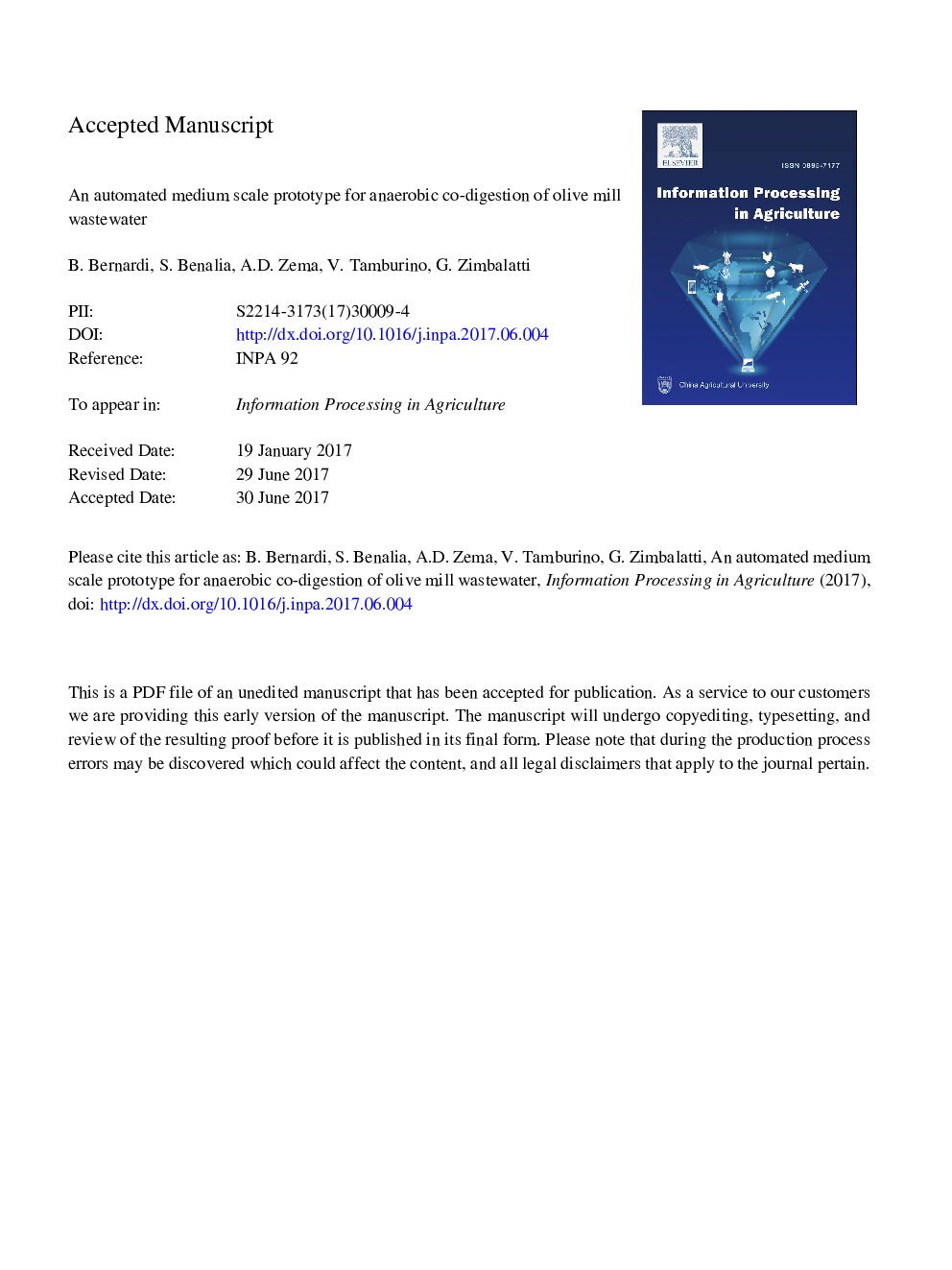| Article ID | Journal | Published Year | Pages | File Type |
|---|---|---|---|---|
| 8875368 | Information Processing in Agriculture | 2017 | 14 Pages |
Abstract
Olive oil production constitutes one of the most important agro-industrial business for Mediterranean countries, where 97% of the international production is focused. Such an activity, mainly carried out through three phase olive oil mill plants, generates huge amounts of solid and liquid by-products further than olive oil. Physico-chemical features of these by-products depend on various factors such as soil and climatic conditions, agricultural practices and processing. As currently carried out, the disposal of these by-products may lead to numerous problems taking into account management, economic and particularly environmental aspects. Indeed, olive mill wastewater is not easily biodegradable due to its high chemical and biochemical oxygen demand, its high content in phenolic compounds, high ratio C/N and low pH, leading consequently to soil and water source pollution. Considering, the above-mentioned statements, olive mill waste disposal constitutes nowadays a challenge for oil industry stakeholders. It becomes necessary to look for alternative solutions in order to overcome environmental problems and ensure the sustainability of oil industry. Anaerobic co-digestion of olive mill wastewater with other agro-industrial matrices could be one of these solutions; since it offers the possibility to produce green energy and break down toxicological compounds contained in these wastewater for a better disposal of the digested matrices as soil conditioner. In this contest, this note reports the functioning principle of an automated medium scale plant for anaerobic co-digestion of olive mill wastewater.
Related Topics
Life Sciences
Agricultural and Biological Sciences
Agricultural and Biological Sciences (General)
Authors
B. Bernardi, S. Benalia, D.A. Zema, V. Tamburino, G. Zimbalatti,
